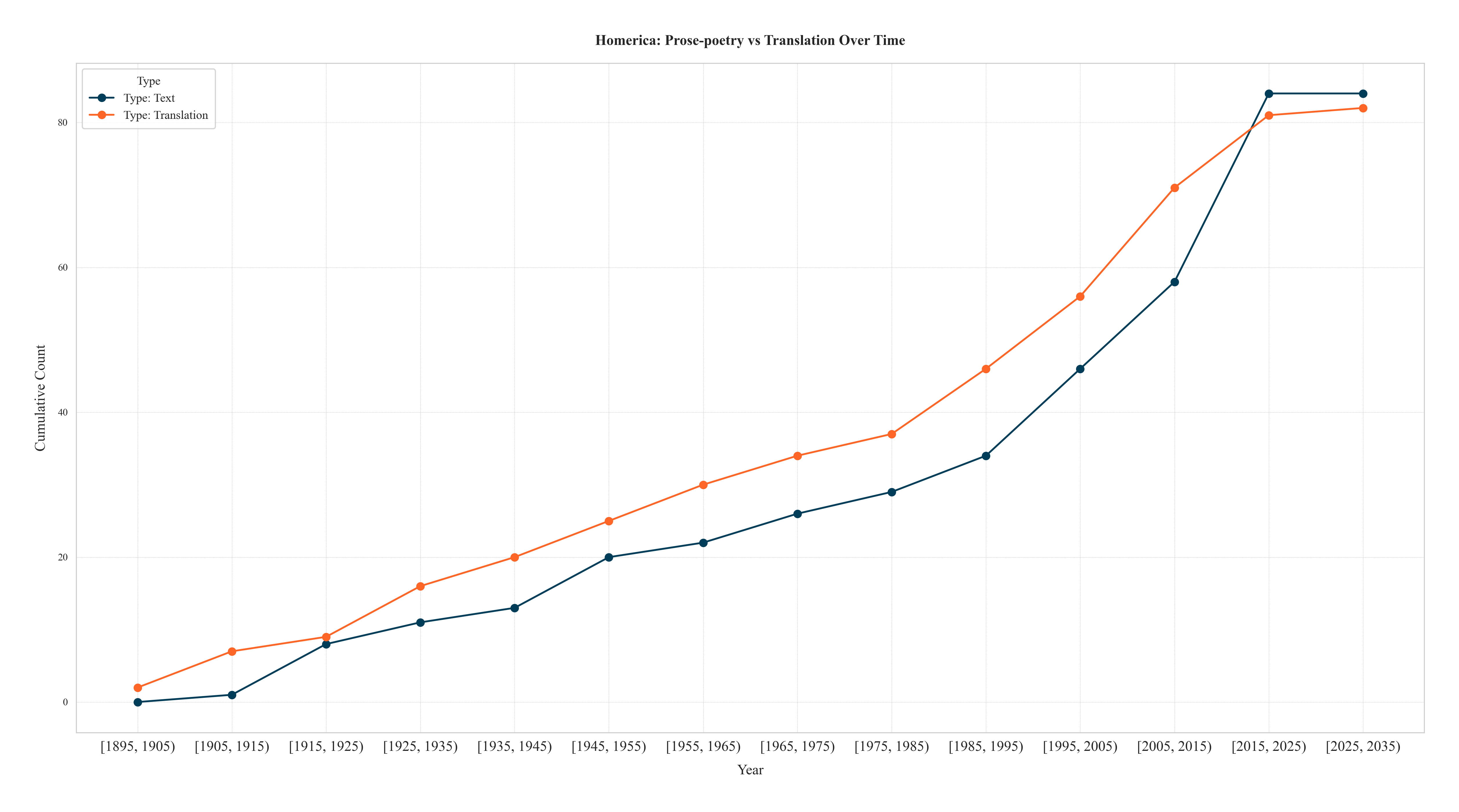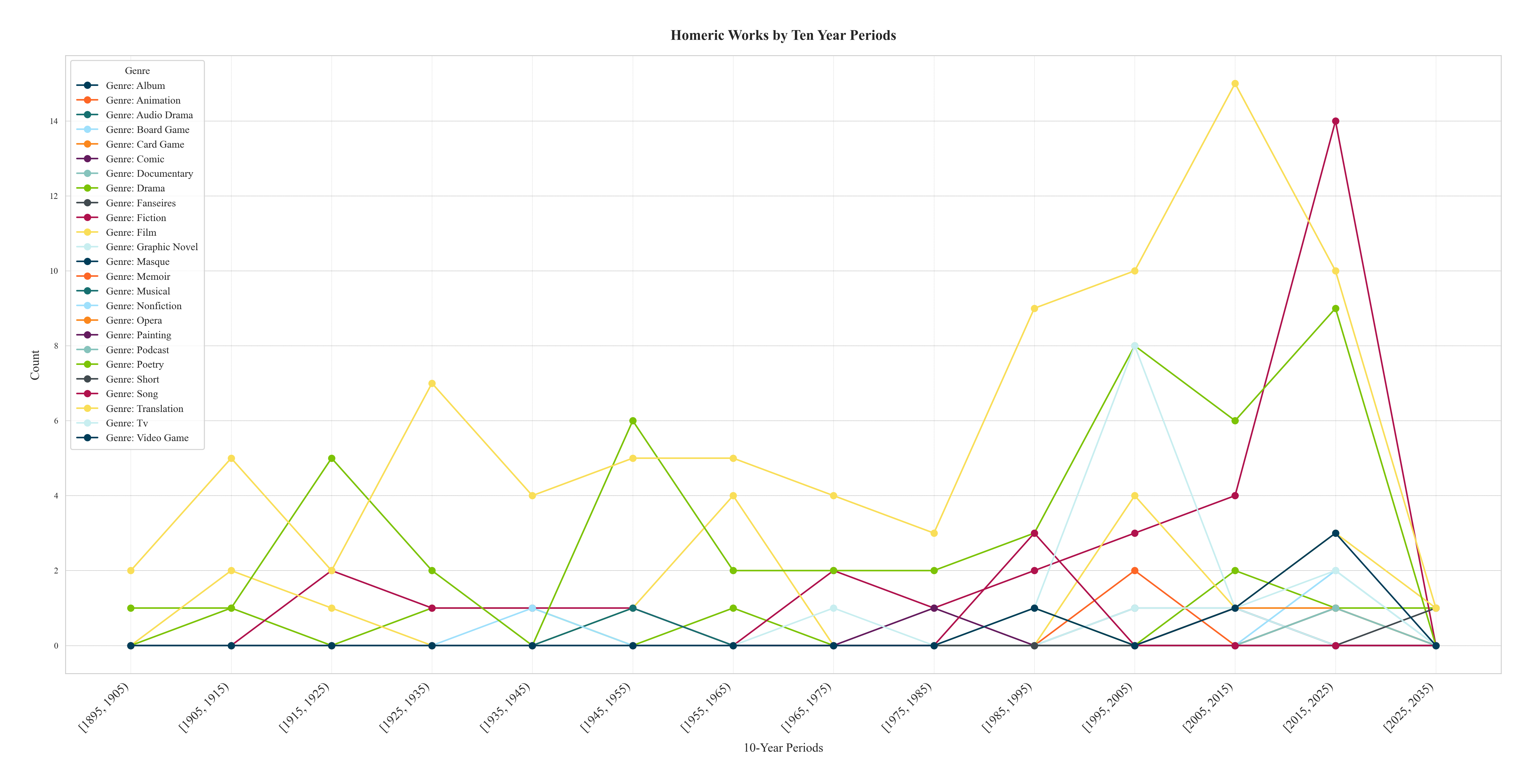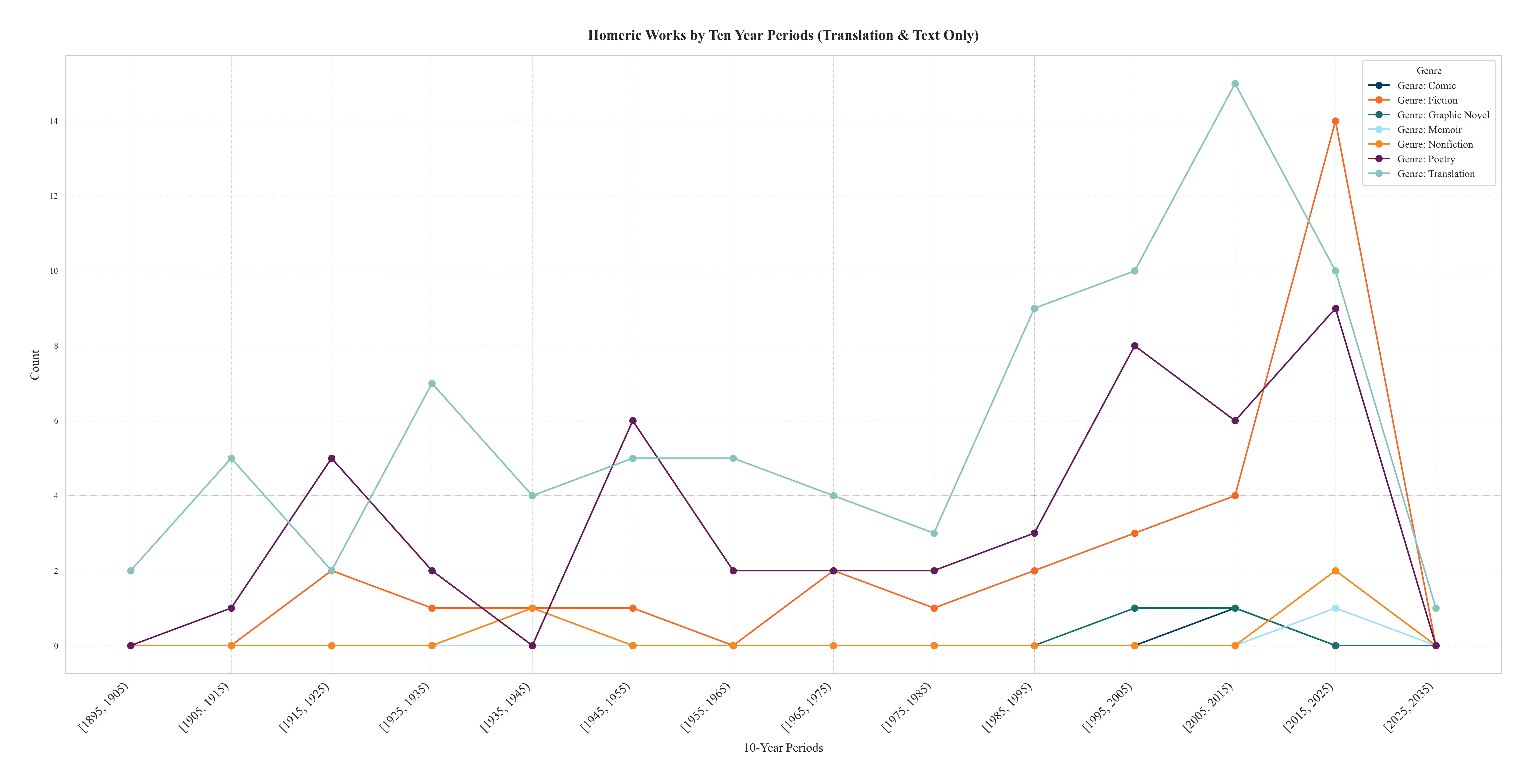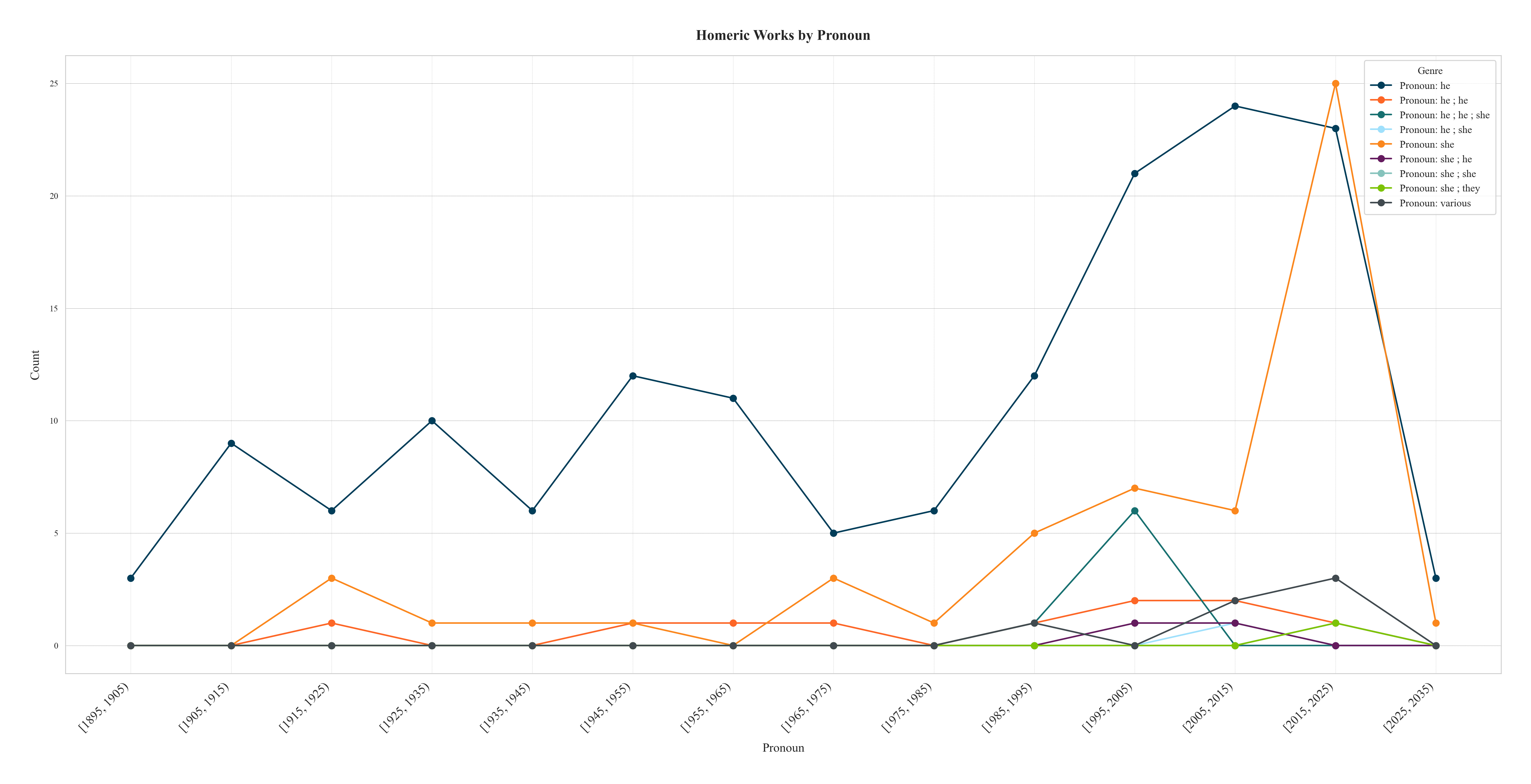Beyond-Homer
Appendix C: The Contemporary Homeric Wave
A Digital Catalogue of Homerica
Toward a comprehensive digital archaeology of Homeric cultural transmission
This appendix presents a fluid archive documenting the ongoing entanglement between Homeric epic and contemporary cultural production—a living dataset of retellings, translations, adaptations, and transfigurations. The current iteration encompasses approximately 350 entries spanning both the Odyssey and the Iliad, constituting what may represent the most comprehensive digital catalogue of Homeric reception currently accessible. While this oceanic archive privileges works within the Anglophone tradition—reflecting the specific parameters of this study—it deliberately resists monolingual boundaries, acknowledging the transnational flows of Homeric material across linguistic and cultural borders.
The Temporal Seascape: Mapping Homeric Currents
The genealogy of English Homeric reception reveals intriguing patterns of cultural preference and literary engagement. While the Iliad dominated early translation efforts—witnessing four distinct iterations between 1581 and 1615 through Arthur Graham Hall (1581), Roger Rowlings (1587), Peter Colse (1596), and George Chapman (1615)—the adaptive tradition preceded these translations by two centuries. John Gower’s Tale of Circe and Ulysses (1380) initiated a lineage of creative reimagining that would flourish alongside, yet distinct from, the translational enterprise. Peter Colse’s Penelopes Complaint: Or, A Mirrour for Wanton Minions (1596) and William Browne’s Circe and Ulysses (1614) further exemplify this early adaptive impulse towards the Odyssey.
This historical data illuminates a significant cultural shift: the Iliad maintained dominance within the Homeric canon until the twentieth century, when a dramatic reversal occurred. Contemporary reception decisively privileges the Odyssey as demonstrated in the temporal distribution below:

Figure 1. Temporal distribution of Homeric works by source across 25-year periods. This visualization maps the longitudinal patterns of Homeric reception, with each source epic plotted as a discrete time series. The vertical demarcation (red) indicates our contemporary moment (2025). The data reveals a historical preference for the Iliad that persisted until the early twentieth century, after which the Odyssey emerged as the dominant text within cultural production. This reversal suggests fundamental shifts in how contemporary culture engages with epic narrative—perhaps reflecting modern preoccupations with journey, exile, and return over martial valor.
How strong is the influence of Joyce’s Ulysses and what episteme is this trend reacting to? This is a riveting question that need investigation and a study on its own. It is a literary phenomenon that has implications to this day. The twentieth and twenty-first centuries witness another crucial transformation: the rise of literary transfiguration as a dominant mode of Homeric engagement. Only in the 2010s did creative adaptations surpass translation as the primary vehicle for Homeric transmission:

The granular analysis captured within this archive reveals the extraordinary generic diversity characterizing contemporary Homeric reception:

When isolating text-based works, fiction emerges as the dominant contemporary genre, followed by translation and poetry—a hierarchy that speaks to shifting literary economies and reading practices:

Perhaps most significantly, this data reveals the gendered dynamics propelling the contemporary Homeric wave. The proliferation of fiction corresponds directly with increased female authorship, suggesting that this resurgence represents not merely quantitative growth but a fundamental reimagining of epic authority. The past decade alone has witnessed transformative contributions from Hannah Brown, Emily Hauser, Madeline Miller, Pat Barker, Natalie Haynes, Claire North, Sarah Underwood, and others—writers who interrogate, subvert, and reconstitute the epic tradition from positions historically marginalized within classical reception:

Theoretical Implications: Archive as Method
This digital catalogue functions not merely as repository but as methodological intervention, revealing how computational approaches can illuminate patterns invisible to traditional philological analysis. The Homeric material emerges here not as static classical inheritance but as dynamic expressive medium through which contemporary writers negotiate questions of authority, identity, and narrative power.
The data demonstrates that Homer persists within contemporary culture precisely through transformation—each retelling, translation, and adaptation constituting both preservation and reimagining. This paradox of continuity through change reveals the epic tradition as fundamentally entagled. The contemporary Homeric wave, particularly as channeled through female voices, suggests that cultural vitality emerges not from faithful reproduction but from strategic disruption of inherited narratives, from deterritorialization and reterritorialization of Homer.